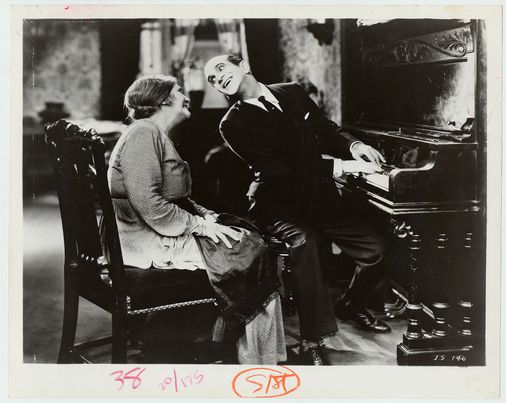Today, Oct. 6, is the coincidental anniversary of two distinct, epochal musical debuts: the first performance, in 1600, of Jacopo Peri’s “Euridice,” the earliest surviving opera, and the 1927 premiere of “The Jazz Singer,” the first feature-length “talking picture,” boasting synchronized, audible dialogue and singing. The latter is regarded as both an artistic and technological advance, but, in fact, both works capitalized on new technologies. Interestingly, the technology that survived is not the one you might think.
Not precisely, anyway. “The Jazz Singer” marked the emergence of a fully audio-visual cinema, but the film’s specific sound setup was already approaching obsolescence. The Vitaphone system recorded soundtracks on phonograph discs; while encoding audio tracks on the film itself was already possible, the sound quality was, at the outset, comparatively poor. But Vitaphone required substantial infrastructure. Cameras and recording lathes had to be motor-coupled to match sound and image. Records had to be shipped — and reshipped, as repeated playings eventually degraded the grooves — to theaters across the country, where they were synchronized, reel by reel, by individual projectionists. And even by 1927, sound-on-film quality had practically caught up with sound-on-disc. Vitaphone disappeared within a few years.
The technology that helped spur “Euridice,” by contrast, endures: printing. Sixteenth-century Italian city-states witnessed a boom in printed books and sheet music. The Florentine Camerata, the circle of humanists whose fascination with antiquity seeded the birth of opera — updating the ancient Greek marriage of music and drama on modern lines — embraced print as a vehicle for discourse and a means of establishing intellectual priority. The group had dissolved by the time of “Euridice,” but the work survived (unlike Peri’s earlier “Dafne”) thanks to friction among Camerata members that, characteristically, played out in print. At the opera’s first performance (celebrating the wedding of King Henry IV of France and Maria de Medici) Peri was obliged to include numbers by his rival, Giulio Caccini, as a condition for using singers from Caccini’s entourage. Determined to deny Peri further glory, Caccini hurriedly composed his own setting of the full “Euridice” libretto and rushed it into print, spurring the subsequent publication of Peri’s original.
Print may yet face its own Vitaphone-like reckoning. Stories, however, abide. That of Orpheus and Eurydice is an operatic perennial; retellings by Claudio Monteverdi, Christoph Willibald Gluck, and Jacques Offenbach remain repertoire staples, alongside contemporary interpretations from composers such as Philip Glass or Harrison Birtwistle. “The Jazz Singer” — itself adapted from Samson Raphaelson’s stage play — has been remade for both film and television, with Danny Thomas, Jerry Lewis, and Neil Diamond taking on the role made famous by Al Jolson. Technological futures are necessarily hazy, but any new medium will, inevitably, reclaim old narratives.
Matthew Guerrieri can be reached at [email protected].


![Every new Android Q feature [Updated with Beta 6]](https://newsfortomorrow.com/wp-content/uploads/2019/08/Every-new-Android-Q-feature-Updated-with-Beta-6-225x125.png)













